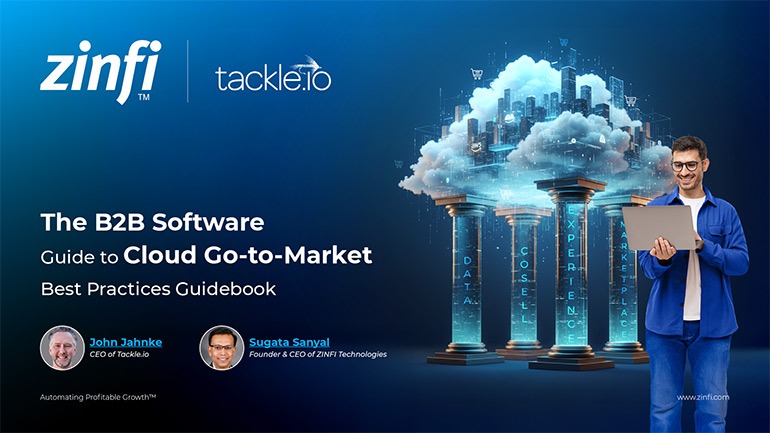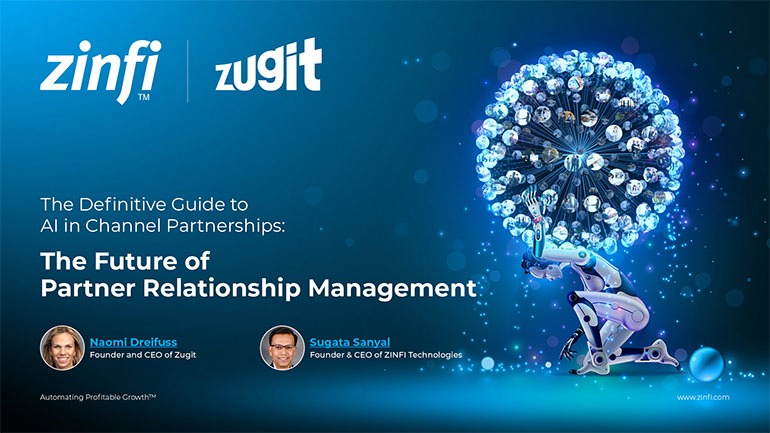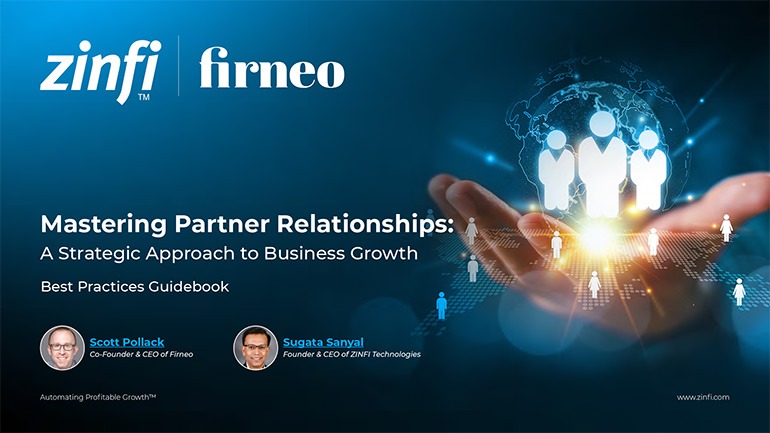Best Practices Articles

Five Mistakes to Avoid in Partner Relationship Management Platform
Companies selling to the channel need to understand some of the core principles of partner relationship management. In other articles we have discussed why partner relationship management fails, and why it is important to avoid those failure modes. It is even more important to avoid a few core mistakes that many organizations make either intentionally or unintentionally. In this article we’ll explore the five core mistakes that we see vendors across the channel making consistently. These are mistakes that can easily be avoided with some thought and pre-planning.
- Overdistribution: If your organization is focused on partner relationship management and you want to drive high-level partner satisfaction, it is essential to make sure your partners know you care about their business and not just your own. It’s common for vendors to send the wrong signal to their partner base by announcing a recruitment and expansion program. While this makes perfect sense if you are trying to expand territories where you have no presence and want to add geographies or countries where you don’t currently do business, it is incredibly important to make sure in a market where you already have a presence that you don’t send the wrong signal and undermine your partner relationships. One of the best ways of avoiding this kind of mistakes is to perform partner profile and potential analysis. For example, if you’re selling into large countries like the US, Germany, France or the UK, and have been doing so for a while, chances are you already have a decent infrastructure for partner relationship management. If you have data that describes your partners in a great degree of detail--who they are, what their competencies are, what they do--then you can analyze your partner profiles to determine the potential of that base. Instead of recruiting more partners to go sell into those markets, you may be better off making investments with existing partners to help them sell more and become more engaged. Or you may want to focus on the partners that have potential to sell more but still haven’t lived up to that potential in actual sales. You can make these distinctions by actively analyzing your partners’ profiles and their potential, which will help you avoid the mistake of over-distribution.
- Overpromise and underdeliver: This is a deadly sin when it comes to partner relationship management. Just like you, partners are busy. If you make a promise, they’re going to rely on you to deliver. If you or your organization is not capable of delivery—whether it’s a bug fix in the technology or improvements in B2C segments or a revised incentive structure that customers have asked for—don’t try to avoid a near-term conflict by agreeing to improvements even though you know that you are unlikely to be able to deliver. Just like in any relationship, in partner relationship management overpromising destroys trust instantly. Therefore, it is better to take the bullet now rather than get completely drowned later on in mistrust and issues associated with it. You are friends with your partners. Tell them honestly why you cannot address certain problems immediately. As long as they understand that you have empathy and you have a business reason for prioritizing specific ideas and needs over others you are currently working on, they will understand. They are business people—just like you. Now, in the process you may lose certain partners, which is okay. But in the end, you’re going to end up having a loyal partner base that values your open communication style. So follow the “underpromise and overdeliver” mantra--not the other way around.
- Complex incentive programs: We see these mistakes related to incentives programs being made in partner relationship management again and again. This can be avoided with an annual review of your incentive structure to make sure what partners have to do to earn incentives is in alignment both with your business objectives and your partners’ business objectives. You can perform this review by conducting proper surveys, hosting focus groups, and by having detailed discussions with partners to understand what’s working and what’s not. Of course, you need detailed tracking of the results of your incentives management program to gain insight into what worked last year and what didn’t work, and when something didn’t work, it is also be helpful to ask partners why. Managing incentives properly is a significant requirement and also an enabler. Rolling out complex rewards, rebates or market development fund (MDF) programs that ultimately diminish your ability to excite partners sends a message that you may be trying to avoid paying them by creating all these hurdles. You can easily avoid these mistakes simply by doing less—which will ultimately prove to be more. Limit yourself to a few simple incentives management programs under your partner relationship management infrastructure or framework and you will drive partner engagement significantly.
- Condoning unethical behavior: This is a major issue in today's channel. If you know of a partner who is side-selling or trading confidential information or spending your market development funds in an improper way, you must step in. As soon as you are aware of an ethical problem, you are responsible. Believe me, you do not want these issues. Get proper legal engagement on your company site and have a formal discussion with the partner, presenting the facts that you have gathered; do not rely on hearsay. Then lay out what the offending partner needs to do to rectify the situation. If you see things are not being addressed properly, take appropriate legal and financial actions. This is an issue you cannot ignore. It can impact you personally, your entire organization and your reputation in the channel. Companies that make short-term trade-up by overlooking unethical practices sooner or later end up losing it all. We have seen that happen several times over the past couple of decades, including the failure of three large businesses because of improper practices.
- Insufficient channel infrastructure investment: We live in a hypercompetitive world. Just like you, your partners want to move at the speed of digital. For them to do that, they require on-demand infrastructure that they can tap into whenever they need it. If your organization today is supporting your partner base manually—whether it's partner onboarding, partner training, lead management, deal registration or incentives management—chances are, you are not only wasting a lot of internal resources but also creating significant friction as you do business with your partners. Do not make this mistake! Is better to make an investment of $100,000 a year only to save millions and generate hundreds of millions of additional revenue with a highly satisfied partner base than to rely on antiquated, paper-based infrastructure that doesn’t scale, doesn’t allow you to expand your reach at a reduced cost, makes it difficult to control the brand experience, and prevents you from increasing partner satisfaction.
While these are not the only mistakes in partner relationship management that a company can make, based on what we have seen over the years these are the five fundamental mistakes that get repeated again and again and can be easily avoided with a little bit of thinking and planning ahead. Keep these mistakes in front of you and make sure that both existing employee channel employees and newly hired employees go through an orientation program to understand these how to avoid them. Apart from the tactical investment in channel infrastructure, these are guiding principles that cost you nothing, and they will undoubtedly lead to better partner relationship management across the channel.
Want to learn more about partner relationship management? Please go to our website.
Best Practices Guidebook
 Modernizing Channel Marketing: AI and Ecosystem Enablement Best Practices
Modernizing Channel Marketing: AI and Ecosystem Enablement Best PracticesDownload for FREE
 The Channel’s Shift to Partner-Led With AI Best Practices
The Channel’s Shift to Partner-Led With AI Best PracticesDownload for FREE
 Hyperscalers, ISVs, and AI: Shaping the Future of B2B Software Distribution
Hyperscalers, ISVs, and AI: Shaping the Future of B2B Software DistributionDownload for FREE
 Definitive Guide to a Partner Ecosystem-First Sales Strategy
Definitive Guide to a Partner Ecosystem-First Sales StrategyDownload for FREE
 The Partner-Led Digital and AI Transformation Best Practices
The Partner-Led Digital and AI Transformation Best PracticesDownload for FREE
 Startup Talent Recruitment: Hiring Missionaries, Not Mercenaries
Startup Talent Recruitment: Hiring Missionaries, Not MercenariesDownload for FREE
 The Future of Partner Relationship Management with AI in Partnerships
The Future of Partner Relationship Management with AI in PartnershipsDownload for FREE
 Cybersecurity for the 99%: Strategies from the Frontline
Cybersecurity for the 99%: Strategies from the FrontlineDownload for FREE
 Mastering Partner Relationships: A Strategic Approach to Business Growth
Mastering Partner Relationships: A Strategic Approach to Business GrowthDownload for FREE
 Mastering Partner Relationship Management: Keys to SaaS Channel Success
Mastering Partner Relationship Management: Keys to SaaS Channel SuccessDownload for FREE
 Navigating the AI Revolution: Guide for Partners in the Microsoft Ecosystem
Navigating the AI Revolution: Guide for Partners in the Microsoft EcosystemDownload for FREE
 Mastering the Modern Buyers Journey: Sales Leader’s Guide to AI & Engagement
Mastering the Modern Buyers Journey: Sales Leader’s Guide to AI & EngagementDownload for FREE










